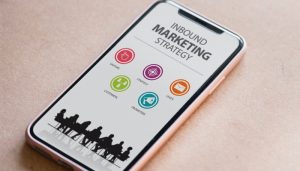Welcome to the gateway of business success – the sales funnel! It may sound like a scary concept, but have no fear – we will walk you through the ins and outs of what a sales funnel really is so that you can enter your business venture with the confidences necessary to build your client base and share your product or service with the world.
Understanding the Sales Funnel Concept
First things first – we need to understand the overall definition of what a sales funnel is and what purpose it serves. In this first section, we’ll delve into the visual and psychological aspects that make sales funnels a powerhouse in the world of customer acquisition.
Visualizing the Sales Journey
At its core, a sales funnel is a visual representation of the customer journey. Picture a funnel, wide at the top and tapering down at the bottom. This simple yet powerful image illustrates the stages a potential customer goes through, starting with awareness and progressing through interest, consideration, intent, and finally, the decision to purchase.
The visual representation serves as a roadmap, guiding businesses to understand and strategically plan for each stage of the customer’s progression. It’s not just a diagram; it’s a dynamic tool to comprehend the buyer’s journey systematically.
Psychology in Sales Funnels
Beyond the visual of that old red funnel hanging in your grandpa’s garage, the success of sales funnels lies in understanding the psychology of your audience. Each stage of the funnel represents a different mindset, from initial awareness to the final decision. Crafting content and experiences that resonate at each stage is essential for guiding your potential customers seamlessly through their journey.
Ask yourself what you want your audience to feel and experience when coming in contact with your product or service, your brand, and your content. Once you can answer these important questions, be prepared to be flexible in your approach and be open to new concepts.
Sales Funnel vs. Sales Pipeline
The terms “sales funnel” and “sales pipeline” are often confused with one another, however, they serve distinct purposes. Let’s clear the air on what each of these tools really is.
Sales Funnel: The Customer’s Odyssey
The sales funnel is customer-centric, focusing on the buyer’s journey from awareness to decision. It emphasizes the emotional and psychological aspects of decision-making, offering a holistic view of the customer’s experience.
Sales Pipeline: The Seller’s Blueprint
In contrast, a sales pipeline is more seller-focused, outlining the steps a sales team takes to move a prospect through the sales process. It’s a systematic approach to managing opportunities and closing deals, providing a blueprint for the seller’s actions.

The Importance of Sales Funnels
Why do businesses need sales funnels? Imagine embarking on a spontaneous road trip to an unfamiliar destination without a map or GPS. Chaos, right? The same applies to customer acquisition with your well-structured sales funnel as your guide.
Sales funnels streamline the customer journey, ensuring that no potential lead gets lost or overlooked. It’s a strategic approach to guide prospects through the buying process, minimizing the chances of missed opportunities. They also provide stepping stones for personalization in an era where individualized targeting is key to a successful campaign. Sales funnels allow businesses to tailor their interactions at each stage. Neglecting this structured approach may result in generic outreach, leading to disengagement and lost interest. Sales funnels empower businesses to connect with their audience on a personal level, creating a more meaningful and memorable customer experience.
Real-Life Sales Funnel Examples
To bring theory to life, let’s explore real-life examples of sales funnels in action.
E-commerce: Consider your typical online shopping experience. An e-commerce sales funnel begins with an enticing ad or social media post, guiding your audience through product exploration, cart additions, and finally, a seamless checkout process. The journey is carefully crafted to lead those you’re targeting from awareness to purchase.
Service-Based: For service providers, such as a digital marketing agency, the sales funnel may start with informative content to create awareness (such as a lead magnet). It then progresses to showcasing successful case studies, building trust and credibility, ultimately leading potential clients to request a consultation or service. It’s about nurturing relationships through each stage of the funnel.
In Conclusion
As we conclude this first part of our journey into sales funnels, it’s evident that they are more than just a business buzzword. They are a strategic necessity for businesses aiming for sustainable growth.
Stay tuned for Part II, where we’ll delve into how to establish a sales funnel. The adventure into mastering sales funnels has just begun, and we’re here to guide you every step of the way.




